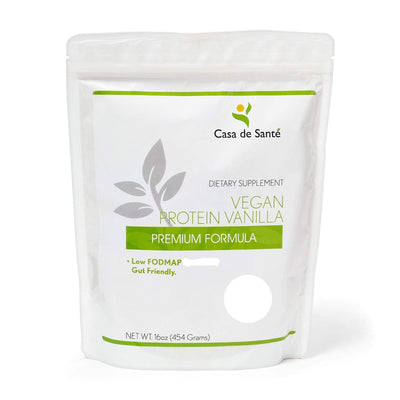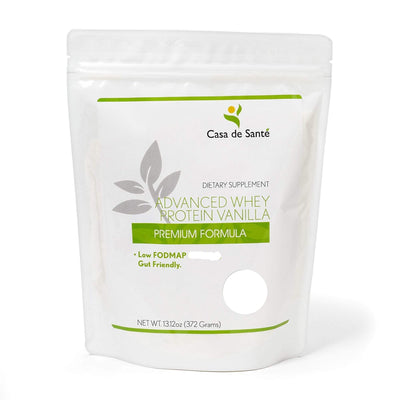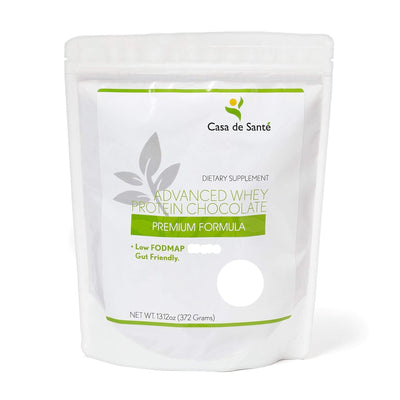Alcat Test: 50 Food Panel by Cell Science Systems Vs IgG Test
Alcat Test: 50 Food Panel by Cell Science Systems Vs IgG Test
Food sensitivity tests are becoming increasingly popular as a means of identifying potential triggers for adverse reactions to certain foods. Two commonly used tests are the Alcat Test: 50 Food Panel by Cell Science Systems and the IgG Test. In this article, we will explore these two tests in detail, including their methodologies, the range of foods they cover, and how to interpret the results. By understanding the differences between these tests, individuals can make informed decisions about which test may be most suitable for their specific needs.
Understanding Food Sensitivity Tests
Before delving into the specific details of the Alcat Test and the IgG Test, it is important to first understand the concept of food sensitivity testing. Food sensitivities refer to adverse reactions that occur when a person consumes certain foods. These reactions are typically milder than allergies but can still cause discomfort and other symptoms. Food sensitivity tests aim to identify these trigger foods so that individuals can make dietary adjustments to improve their overall well-being.
Food sensitivities can manifest in various ways:
1. Digestive issues: Many individuals experience bloating, gas, abdominal pain, and diarrhea after consuming certain foods to which they are sensitive. These symptoms can significantly impact a person's daily life and overall well-being.
2. Skin problems: Food sensitivities can also manifest as skin issues such as rashes, eczema, and acne. These skin problems can be persistent and frustrating for individuals, affecting their self-esteem and confidence.
3. Fatigue and low energy: Some people may notice a significant drop in energy levels and experience fatigue after consuming trigger foods. This can make it challenging to carry out daily activities and can affect productivity and overall quality of life.
What is a Food Sensitivity Test?
A food sensitivity test is a diagnostic tool used to determine which specific foods may be causing adverse reactions in an individual's body. These tests analyze the body's immune response to various food substances and provide a comprehensive list of foods that may be contributing to symptoms such as bloating, fatigue, and digestive issues.
The two commonly used food sensitivity tests are:
1. Alcat Test: This test measures the changes in the size and number of white blood cells in response to different food substances. It provides a detailed analysis of individual food sensitivities and helps create a personalized dietary plan.
2. IgG Test: This test measures the levels of IgG antibodies in the blood against specific food proteins. Elevated levels of IgG antibodies indicate a potential sensitivity to those particular foods.
The Importance of Identifying Food Sensitivities
Identifying food sensitivities is crucial for several reasons. Firstly, it allows individuals to alleviate symptoms that may have been affecting their quality of life for an extended period. By eliminating trigger foods, individuals can experience relief from uncomfortable symptoms such as bloating, digestive issues, and skin problems.
Secondly, understanding one's food sensitivities helps in developing a personalized dietary plan, eliminating trigger foods, and replacing them with healthier alternatives. This can lead to improved overall health and well-being.
Finally, by avoiding foods to which one is sensitive, individuals can reduce inflammation in the body and potentially prevent the development of chronic health conditions linked to prolonged inflammation. Chronic inflammation has been associated with conditions such as autoimmune diseases, cardiovascular diseases, and even certain types of cancer.
It is important to note that food sensitivity tests should be interpreted in conjunction with clinical symptoms and under the guidance of a healthcare professional.
An In-depth Look at the Alcat Test: 50 Food Panel by Cell Science Systems
The Alcat Test: 50 Food Panel by Cell Science Systems is a popular food sensitivity test that utilizes advanced technology to analyze an individual's immune response to a wide range of food substances. This groundbreaking test provides valuable insights into potential food sensitivities, helping individuals make informed dietary choices for optimal health and well-being.
Understanding how the Alcat Test works is key to appreciating its effectiveness in identifying food sensitivities. The test employs a technique called flow cytometry, which measures changes in the size and complexity of white blood cells when exposed to different food substances. By analyzing the immune reactions of these cells, the Alcat Test can pinpoint specific foods that may trigger adverse reactions in individuals.
The Alcat Test: 50 Food Panel covers a comprehensive array of common food items, ensuring a thorough assessment of potential food sensitivities across all major food groups. From dairy products to grains, meats to seafood, fruits to vegetables, and various additives, this extensive panel leaves no stone unturned in identifying potential culprits behind adverse immune reactions.
Interpreting the Alcat Test results is a crucial step in utilizing the information effectively. Upon receiving the test results, it is important to consult with a healthcare professional trained in interpreting the findings. These professionals possess the expertise to analyze the results and provide personalized guidance based on an individual's unique dietary needs and health goals.
The Alcat Test results typically categorize foods into three groups: reactive, borderline reactive, and non-reactive. Reactive foods are those that elicit a strong immune response and should be avoided to prevent adverse reactions. Borderline reactive foods may trigger mild immune responses and should be consumed in moderation. Non-reactive foods, on the other hand, are well-tolerated by the individual's immune system and can be safely included in their diet.
Creating a personalized diet plan based on the Alcat Test results is a collaborative effort between the individual and their healthcare provider. By avoiding reactive and borderline reactive foods and incorporating non-reactive foods, individuals can optimize their nutrition and minimize the risk of adverse reactions. This tailored approach to dietary planning can lead to improved overall well-being and quality of life.
In conclusion, the Alcat Test: 50 Food Panel by Cell Science Systems is a powerful tool for identifying food sensitivities and guiding individuals towards a personalized diet plan. By utilizing advanced flow cytometry technology and an extensive panel of tested foods, this test provides valuable insights into an individual's immune response to various food substances. With the guidance of healthcare professionals, individuals can make informed dietary choices to optimize their health and well-being.
Exploring the IgG Food Sensitivity Test
The IgG Food Sensitivity Test is another widely used method for identifying food sensitivities. This test focuses on measuring IgG antibodies produced by the body in response to specific foods. Let's delve deeper into how the IgG Test works, the foods it covers, and how to understand the test results.
The Science Behind IgG Testing
The IgG Test analyzes the levels of IgG antibodies in the bloodstream, as elevated levels can indicate a sensitization to certain foods. This type of immune response differs from the immediate reactions associated with allergies and is more commonly associated with delayed food hypersensitivity reactions. The IgG Test aims to identify these delayed immune reactions to specific foods.
When a person consumes a food to which they are sensitive, the body recognizes it as a foreign substance and produces IgG antibodies as a defense mechanism. These antibodies attach to the food particles and form immune complexes. These immune complexes can then circulate in the bloodstream, causing inflammation and various symptoms such as digestive issues, skin problems, fatigue, and more.
The IgG Test plays a crucial role in identifying these delayed immune reactions because they can be challenging to pinpoint without proper testing. By measuring the levels of IgG antibodies specific to certain foods, healthcare professionals can determine which foods may be contributing to an individual's symptoms and design personalized dietary plans to alleviate these symptoms.
Foods Covered Under the IgG Test
The IgG Food Sensitivity Test evaluates a broad range of food items, including dairy products, grains, nuts, seeds, vegetables, fruits, and proteins such as poultry and fish. By examining IgG antibody levels against these various food substances, the test provides insight into specific triggers that may be affecting an individual's well-being.
Dairy products, for example, are a common source of food sensitivity. The IgG Test can help identify whether an individual has an immune reaction to specific dairy products such as milk, cheese, or yogurt. Similarly, grains like wheat, barley, and rye can trigger immune responses in some individuals, leading to symptoms like bloating, abdominal pain, and fatigue.
The IgG Test also covers a wide range of fruits and vegetables, allowing for a comprehensive evaluation of potential sensitivities. For instance, individuals who experience digestive discomfort after consuming certain fruits like apples or vegetables like tomatoes can benefit from this test in identifying the specific triggers.
Understanding Your IgG Test Results
Similar to the Alcat Test, interpreting IgG Test results requires professional guidance. The results often categorize foods into different levels of reactivity, such as mild, moderate, and severe. By identifying which foods elicit a stronger immune response, individuals can take appropriate measures to eliminate or reduce their exposure to these trigger foods.
It is important to note that the IgG Test results should not be used as a sole basis for dietary changes. The test should be used in conjunction with a comprehensive evaluation of symptoms and a professional's guidance. An experienced healthcare practitioner can help interpret the results and design an individualized plan that takes into account the individual's overall health, dietary preferences, and nutritional needs.
Moreover, the IgG Test results can serve as a starting point for an elimination diet, where specific trigger foods are temporarily eliminated from the diet to observe symptom improvements. This process can help individuals identify their unique food sensitivities and make informed decisions about their dietary choices.
In conclusion, the IgG Food Sensitivity Test is a valuable tool for identifying delayed immune reactions to specific foods. By measuring IgG antibody levels, healthcare professionals can gain insights into an individual's food sensitivities and develop personalized dietary plans to alleviate symptoms and improve overall well-being.
Alcat Test Vs IgG Test: A Comparative Analysis
Now that we have explored both the Alcat Test: 50 Food Panel by Cell Science Systems and the IgG Food Sensitivity Test individually, let's compare the two to help individuals determine which test may be more suitable for their specific needs.
Accuracy and Reliability
Both the Alcat Test and the IgG Test have been subjected to various studies and have shown promising results in identifying food sensitivities. However, individual responses to each test may vary due to factors such as the type and severity of food sensitivities. It is crucial to work closely with healthcare professionals to understand the limitations and benefits of each test to make an informed decision.
Cost Comparison
The cost of food sensitivity testing can vary depending on the specific laboratory conducting the test and the number of food items included in the panel. It is important to consider budgetary constraints when deciding which test to pursue. It is also worth discussing insurance coverage with healthcare providers, as some policies may partially or fully cover these tests.
Ease and Speed of Testing
The Alcat Test and IgG Test differ in terms of logistics. The Alcat Test requires a blood sample collected by a healthcare professional, while the IgG Test can be taken at home using a finger-prick blood collection kit. Additionally, the time required to receive test results may also vary between the two methods. Individuals should consider these factors when deciding which testing method aligns with their preferences and convenience.
In conclusion, the Alcat Test: 50 Food Panel by Cell Science Systems and the IgG Food Sensitivity Test are valuable tools for identifying potential food sensitivities. While both tests aim to provide individuals with insights into their specific triggers, it is important to consider factors such as accuracy, cost, and ease of testing when making a decision. By working closely with healthcare professionals and understanding the intricacies of each test, individuals can take critical steps towards improving their overall well-being and quality of life.




























